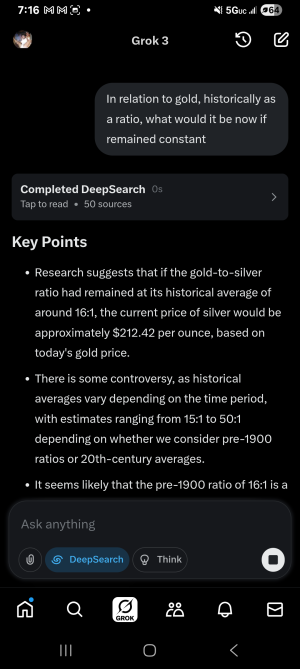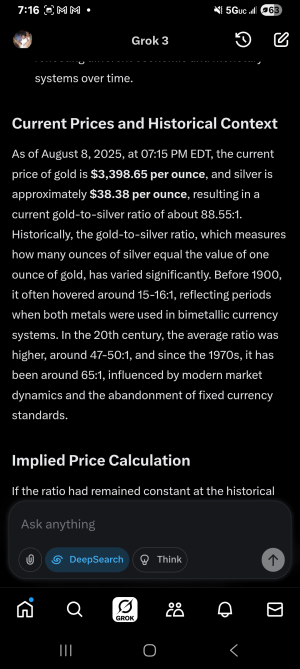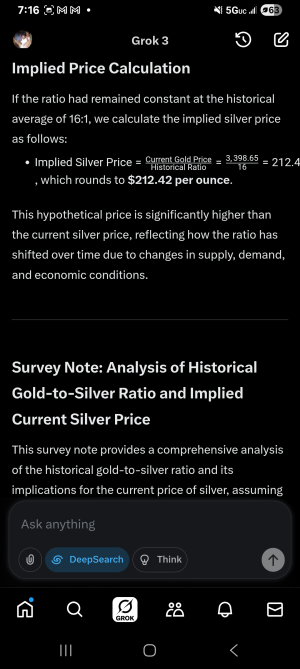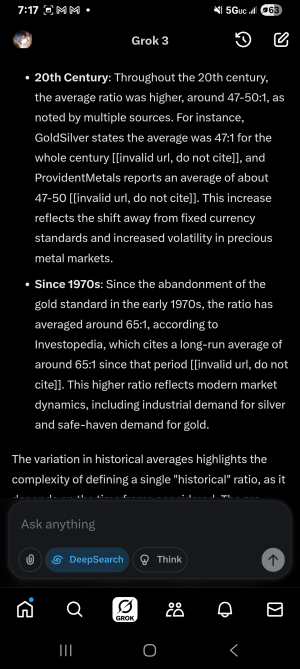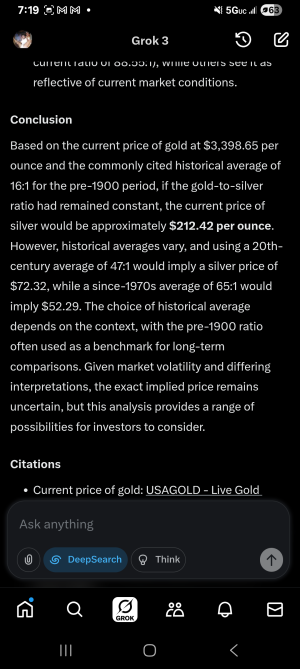-
Pat Flood (@rebarcock) passed away 9/21/25. Pat played a huge role in encouraging the devolopmemt of this site and donated the very first dollar to get it started. Check the thread at the top of the board for the obituary and please feel free to pay your respects there. I am going to get all the content from that thread over to his family so they can see how many people really cared for Pat outside of what they ever knew. Pat loved to tell stories and always wanted everyone else to tell stories. I think a great way we can honor Pat is to tell a story in his thread (also pinned at the top of the board).
You are using an out of date browser. It may not display this or other websites correctly.
You should upgrade or use an alternative browser.
You should upgrade or use an alternative browser.
Xrp btc silver gold
- Thread starter Rebarcock.
- Start date
I bet gold will hit 3500 before silver at 40.No kidding. Was just looking at that. That makes silver look even better imo. Silver historically is 16:1 gold. It is way out of whack. The paper players (jpm,chase,etc) just blew a load load when it hit 39.50. They won't let it get over 40.00. Physical silver is 1/10 what is available on paper. Unsustainable.
Xrp 3.31
I want this bitch to boom yesterday
I wouldnt be surprised. When silver does break through 40 imo it'll blow past 52.00. The 212.00 may be high but 52.00 is way too low. Especially when you account for AI and tech. Silver is the best conductor next to gold. Silver is usable gold sits there. No one really mines silver. It is a byproduct of zinc iron ore or other mining operations. The miners produce it bc why throw away value.I bet gold will hit 3500 before silver at 40.
It normally takes 28yrs to get a mine in aamerica going from inception to 1st day digging. That is a ton of lag time
ETH about to pop a 52 week high.
Done.
All my shit is hittingDone.
Is this an oh shit moment?Ummmm
I think it is a buy moment.Is this an oh shit moment?
Buy what xrp?I think it is a buy moment.
9Mounties07
Legendary
XRP or silver?Buy what xrp?
Yes, and Bitcoin is at an attractive level. HBAR, too.Buy what xrp?
Silver may be on a trajectory that makes everything else blush. Even after its recent surge.XRP or silver?
Praise
Elite
Hey Buddy, We appreciated for the care package you shipped to us. It really mean the world to us. God bless the work of your hands and how are you buddy ttyh?Done.
TheFiend
Elite
Is that with the crypto shekels or whatever they're called?Nope
If I dumped 10k into that shit, how long you reckon before I could flip it for at least 100k? More than 6 weeks?
TheFiend
Elite
Wow, that per oz is it?Does silver hit $75 by year end? 64/65 today
So like, if I go buy me 100 troy ounces of Ag at $65ish usd today, and if, by Jan 1st, it hits $75, then I've gained $1000 bucks? Is that how this shit works?
What about any additional costs during the whole process, like are there fees involved for shipping, or storage, and presumably the taxman takes a slice too right? If all that adds up to, say, $1000ish bucks, then by Jan 1st I'd have gained sweet fuck all, while some other cunts profited off my wasted time and effort drooling over a pile of metal that cost $6,500 nak and essentially gained me $0 after 2 weeks.
That about right? Surely not? Coz fuck that'd be insane. What if Ag doesn't hit $75 but slips to $55 instead?
Could just use 50 of the original $65 and turn it into $750-$1250 in a single day, doin' what I always do, with 100% going straight in the pocket. Then repeating. $750 ~ 1 day = abracafuckindabra
So yeah nah I really just don't understand how all that fancypants crypto, bit shekel, precious metals and whatnot somehow supposedly works, I just know how my shit works.
Why's everyone obsessed over PMs, cryptos, and etc? Don't make no sense to me. What am I missing? Who's actually making gains from it? Any of you guys? Or what?
TheFiend
Elite
eb102993
Poster
I’d like to know as well. I’m trying to be in it for the long haul but feel myself becoming impatient. And by long haul I’m talking 5-10 yearsWhen is xrp going to make a run again?
Similar threads
- Replies
- 2
- Views
- 98
- Replies
- 59
- Views
- 2K
- Replies
- 10
- Views
- 128
Latest posts
-
Master Thread Dance Your Cares Away/Fraggle/Law Abiding Citizens
- Latest: TheRealJohnCooper
-
-

